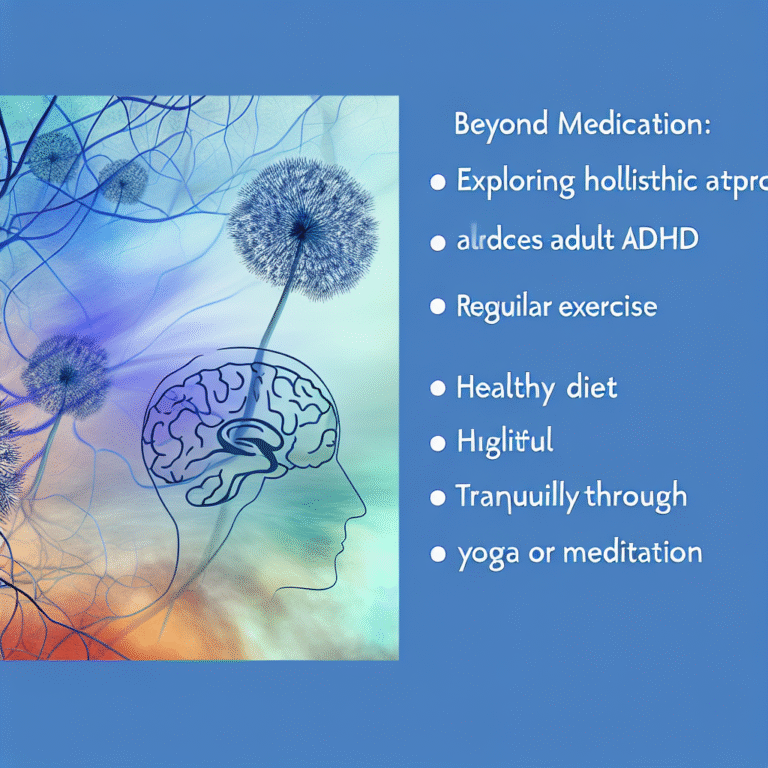
From Isolation to Empowerment: The Essential Role of Group Therapy in Overcoming Social Anxiety
Introduction
Social anxiety is an often silent yet pervasive condition that can render individuals feeling isolated, misunderstood, and overwhelmed in social situations. With millions grappling with this issue worldwide, the importance of addressing it cannot be overstated. For those battling the debilitating effects of social anxiety, group therapy emerges as a transformative approach that not only mitigates feelings of isolation but also fosters empowerment and communal strength. This article will delve into the profound journey "From Isolation to Empowerment: The Role of Group Therapy in Overcoming Social Anxiety," illuminating how shared experiences within a safe environment can spark personal growth and resilience.
Understanding Social Anxiety
Social anxiety is characterized by an intense fear of social interactions, stemming from worries about being judged or embarrassed. For many, this anxiety can lead to avoidance behaviors, restricting their social engagements and further entrenching feelings of loneliness. Acknowledging the condition and its underlying causes is the first step toward recovery, laying the foundation for the healing potential found in group therapy.
The Nature of Social Anxiety
- Definition: Social anxiety disorder (SAD) involves excessive self-consciousness and fear of social situations.
- Prevalence: According to the National Institute of Mental Health, approximately 7% of adults in the United States experience social anxiety disorder annually.
- Symptoms: Symptoms may include rapid heartbeat, sweating, trembling, and an overwhelming sense of dread in social environments.
The deep emotional toll taken by social anxiety often leads individuals to retreat further into themselves, thus increasing their feelings of isolation. This cycle is where the power of group therapy begins to shine.
How Group Therapy Works
Group therapy is a form of psychotherapy that involves one or more therapists working with a small group of clients. The dynamics of group settings can facilitate profound changes in individuals grappling with social anxiety.
Elements of Group Therapy
- Shared Experience: Knowing others face similar challenges creates a supportive environment where participants can share their fears and experiences.
- Feedback: Group members offer each other insights and perspectives that might be difficult to see alone.
- Skill Building: Therapeutic groups often focus on developing skills, such as communication techniques and coping strategies for managing anxiety.
The Therapeutic Process
In a traditional group therapy session, individuals might share their experiences related to social anxiety while therapists guide the conversation and encourage constructive feedback. Participating in discussions and activities not only enhances communication skills but also reduces feelings of isolation.
Case Study: The Power of Group Dynamics
Case Study Overview
Sarah, a 28-year-old marketer, had struggled with social anxiety since her teenage years. The thought of attending gatherings or even casual meetings at work invoked severe panic, causing her to withdraw from social engagement. After her therapist recommended group therapy as an intervention, Sarah was hesitant but ultimately agreed.
Session Insights: In her initial sessions, Sarah discovered others had stories remarkably similar to hers, each battling their own fears of judgment and rejection. As they began to share, Sarah found solace in the validation of her experiences, which inspired her to open up about her struggles.
Outcome: Over time, the group dynamic became a catalyst for Sarah’s empowerment. Guided exercises focusing on communication helped her practice in a low-pressure environment. By the end of the program, Sarah not only improved her social skills but also began initiating interactions outside of therapy, marking her shift from isolation towards empowerment.
Table: Key Benefits of Group Therapy for Social Anxiety
| Benefit | Description |
|---|---|
| Empathy and Understanding | Group members can relate to similar feelings. |
| Skill Development | Building communication and coping skills. |
| Reduced Fear of Judgment | Safety in sharing without fear of ridicule. |
| Increased Motivation | Encouragement from peers inspires action. |
The Transformation from Isolation to Empowerment
Moving from isolation to empowerment through group therapy involves several crucial steps that individuals typically undergo during their therapeutic journey.
Step 1: Recognizing Isolation
The first step is acknowledging the isolating nature of social anxiety. Many people feel that they are alone in their struggles. By sharing their experiences in group settings, participants begin to realize that they are not alone, paving the way for healthier emotional connections.
Step 2: Engaging in Vulnerability
Group therapy challenges participants to embrace vulnerability. Sharing personal stories fosters a sense of trust, allowing individuals to connect more deeply with others. This sense of belonging is crucial in combating feelings of isolation.
Step 3: Building Confidence
As individuals engage in discussions and practice social skills, they experience gradual improvements in their confidence levels. Each interaction within the group serves as a building block toward overcoming the pervasive fear tied to social situations.
Step 4: Developing Community
The bonds formed within the group create a support network that extends beyond therapy sessions. Having friends who understand one’s struggles can drastically reduce feelings of loneliness and promote a sense of empowerment.
Case Study: Community Building in Group Therapy
Case Study Overview
James, a 32-year-old accountant, faced severe challenges attending work-related events. After joining a group therapy program, he initially found it hard to speak up, yet he felt a sense of community with group members.
Community Impact: Sharing experiences led to deep discussions about coping strategies, facilitating a network for support. James learned the power of community in overcoming challenges. He began arranging informal meetups with group members, which helped him practice social skills in a low-stakes environment.
Outcome: By the end of the program, James’s participation in social events at work had increased significantly; he had gone from avoiding gatherings to becoming a regular participant. His transformations were testament to the group’s ability to shift from isolation to empowerment.
Practical Techniques Utilized in Group Therapy
Advancing the conversation on "From Isolation to Empowerment: The Role of Group Therapy in Overcoming Social Anxiety," it’s essential to explore the techniques employed in group therapy that foster personal development.
1. Role Playing
Role-playing activities provide participants with the opportunity to rehearse social scenarios in a safe space. By acting out these interactions, individuals develop more profound empathy and insight into their reactions and anxieties.
2. Creative Expression
Incorporating creative techniques, like art therapy, allows individuals to express their feelings without the pressure of verbal articulation. This can be particularly beneficial for those who find it challenging to convey their thoughts in words.
3. Mindfulness Practices
Mindfulness exercises are often included to help reduce anxiety in real-time. Practicing techniques such as breathing exercises or visualization in group settings fosters a shared experience of relaxation, creating a collective calm.
Overcoming Barriers to Group Therapy
Though the benefits of group therapy in overcoming social anxiety are vast, some individuals may still hesitate to participate. Understanding and addressing these barriers is critical to encouraging attendance.
Fears of Judgment
Many potential participants worry about being judged or misunderstood. Group facilitators often emphasize that everyone in the room shares similar experiences, creating an environment free of judgment.
Feeling Out of Place
New members may feel intimidated about fitting in. However, therapists often utilize ice-breaking activities to ease introductions, reducing the apprehension associated with new environments.
Case Study: Overcoming Hesitations
Case Study Overview
Lauren, a college student, was apprehensive about joining a group therapy session due to her history of feeling out of place. Through initial consultations with her therapist, she learned that many participants felt similarly nervous.
Beginning the Transition: The therapist encouraged Lauren to attend the first session, reassuring her of the welcoming atmosphere. To her surprise, other members expressed their own apprehensions, breaking the ice immediately.
Outcome: Eventually, Lauren not only found her place within the group but also began leading discussions on managing anxiety as her confidence grew. Her journey became a prime example of overcoming barriers in group therapy settings.
Table: Common Barriers to Group Therapy and Solutions
| Barrier | Solution |
|---|---|
| Fear of Judgment | Emphasize confidentiality and shared experiences. |
| Feeling Out of Place | Utilize ice-breakers to foster connection. |
| Nervousness about Sharing | Start with controlled discussions to ease into openness. |
The Long-Term Impact of Group Therapy
The effects of participating in group therapy extend beyond the immediate sessions, leading to lasting changes in how individuals face social anxiety.
Enhanced Coping Mechanisms
Group therapy equips individuals with tools to manage their anxiety effectively, leading to better coping strategies in daily life. These skills become invaluable in new social contexts.
Lifelong Connections
Some participants form friendships that last beyond therapy, contributing to sustained growth and support networks. This further combats the sense of isolation that often accompanies social anxiety.
Ongoing Empowerment
As individuals transition into empowered roles within their lives, the confidence gained from group therapy paves the way for new opportunities, both social and professional. Participants often report higher levels of satisfaction and growth as they apply what they’ve learned to real-world situations.
Conclusion
Group therapy can serve as a beacon of light for those struggling with social anxiety, guiding them from isolation to empowerment. This therapeutic journey reshapes perceptions, builds invaluable skills, and forges connections, ultimately shifting one’s relationship with social interactions. Armed with new perspectives and communities of support, individuals can transcend social anxiety, confidently stepping into a more connected and fulfilling life.
Motivational Takeaway
If you or someone you know is grappling with social anxiety, consider the power of group therapy—it may just be the transformative experience needed to break free from isolation and step into a brighter future of empowerment.
FAQs
1. What is the difference between group therapy and individual therapy?
Group therapy involves multiple participants sharing and supporting each other while guided by one or more therapists. Individual therapy focuses solely on the client-therapist relationship.
2. How many sessions are typically required in group therapy for social anxiety?
The number of sessions can vary vastly; however, many group programs typically run for 8-12 weeks, depending on individual needs.
3. Can group therapy be combined with other forms of treatment?
Absolutely! Group therapy often complements individual therapy, medication management, or other therapeutic modalities.
4. What if I feel uncomfortable sharing in group therapy?
It’s perfectly normal to feel apprehensive when starting. Many groups start by establishing guidelines for participation, and you can share at your own pace.
5. Are there different types of group therapy for social anxiety?
Yes, different groups may focus on specific aspects, such as social skills training, support, or cognitive-behavioral techniques tailored to reduce anxiety.
The journey from isolation to empowerment isn’t merely a path traveled—it’s a profound transformation made possible through collective experience, support, and understanding within group therapy settings. Engage with it, and you may find your most empowered self.















